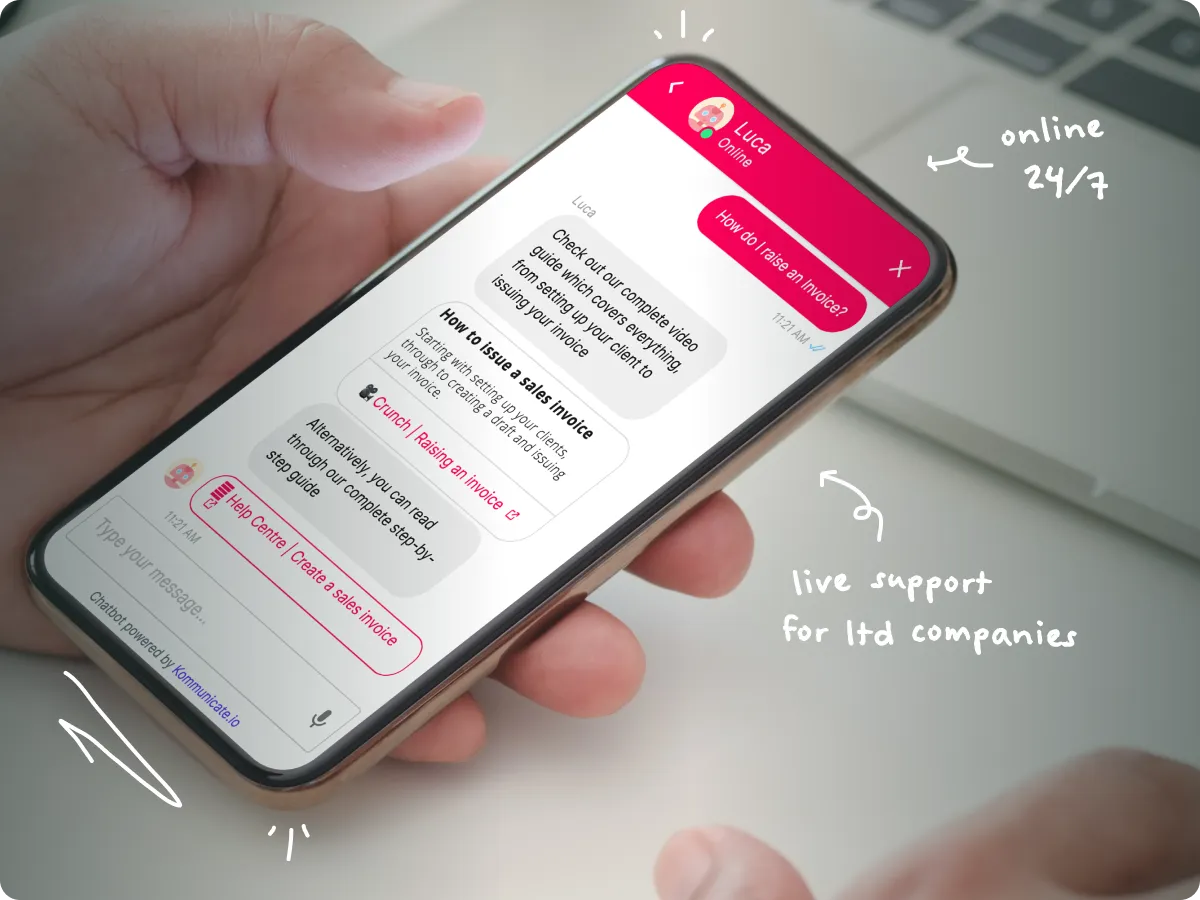For most self-employed people in the UK, driving is a daily part of both your work and personal life. But, as everyone knows, using a car isn’t cheap – buying, maintaining and fuelling a vehicle is expensive.
Fortunately, using a car for business is classed as an allowable expense, meaning you can claim tax relief against it. Self-employed people can claim using one of two different methods: direct cost/actual expenses and flat rate/simplified expenses.
Direct cost allows you to claim for all vehicle costs in a given year, but you’ll have to calculate how much of your usage was business-related before claiming. The flat rate method is far simpler, providing a flat amount per mile driven in a business capacity.
If you’re wondering whether you can claim mileage allowance or which method is right for you, you’re in the right place – this handy guide to self-employed mileage allowance will put you in the driving seat.
Simplified expenses vs direct cost explained
Before you can begin claiming mileage allowance, you need to decide which system will be best for you. To make the right choice, you must know how each one works and what specific allowances are covered or excluded. You can then look at your own vehicle usage habits and make an informed decision.
Differences at-a-glance
- Direct cost: This system sees you claiming the total cost of motoring in a given year by working out the monetary costs and then calculating a percentage for business use.
- Example: if you drove 10,000 miles in a year and half of those journeys were for business, you’d be able to claim 50% of ALL costs associated with motoring in that year – including repairs and maintenance.
- Simplified expenses: Also known as flat rate expenses and often the de-facto method when people say ‘mileage allowance’. Flat rate expenses offer a set monetary value for each business mile that you can claim by submitting a total business mileage figure.
- Example: using the same figures above, you’d submit 5000 business miles to HMRC, resulting in 5000 x 45p = £2,250.
Still unsure? Let’s take a closer look at each system to help demonstrate which is better for you.
Flat rate mileage expenses
Simplified expenses allow you to claim for a flat rate against every business mile driven in a format similar to the flat rate expenses system. It’s the preferred method for many sole traders and is so commonly used that it’s often assumed to be the only ‘mileage allowance’ available.
The flat rate attributes a set monetary value against every qualifying ‘business’ mile, which is intended to help with fuel costs and other motoring expenses. If your mileage exceeds 10,000 in a car or goods vehicle, you can only claim a reduced rate for miles over that threshold.
What you can claim for under simplified expenses
Mileage accrued in any of the following vehicles:
- Cars, excluding those designed for commercial usage like dual control driving instructor cars or black cabs.
- Goods vehicles such as vans and trucks
- Motorcycles
What is the simplified expense/flat rate mileage allowance for 2024/25?
Petrol/diesel cars and goods vehicles
- first 10,000 miles 45p
- after 10,000 miles 25p
Electric cars:
- first 10,000 miles 45p
- after 10,000 miles 45p
Motorcycles:
- 24p
Bicycles:
- 20p
If you transport additional passengers during work journeys, you’ll be able to claim an extra 5p per mile for each passenger. For example, a joiner driving a van to a site with two labourers would mean the joiner could claim 10p extra per mile.
Flat rate expenses in action:
Paul uses his car to drive to client meetings and attend conferences. He tracks his mileage for the year, noting down business or personal usage to determine a total of 12,000 business miles.
Paul can claim 45p on the first 10,000 miles (£4,500) then 25p on the remaining 2000 (£500) – giving him a total of £5,000 mileage allowance.
When is this method best for you?
Flat rate expenses make it easy to recoup some of your driving costs, but don’t accurately reflect the full costs of motoring and may not be as efficient for self-employed people who do a lot of motoring for business purposes.
How does actual expensing work?
Actual expenses require you to keep a detailed record of your vehicle's associated costs. Fuel receipts, repairs, invoices, etc must all be kept and recorded accurately. Once you’ve got a total yearly cost, you must work out what percentage of usage was classed as business and apply it to the total.
Unlike flat rate expenses, where you’re receiving a blanket flat rate against a total mileage amount, this method requires detailed record-keeping so you can supply any required receipts and invoices.
What you can claim for using actual expenses:
- Car insurance
- Fuel
- Repairs and maintenance
- Servicing
- Parking
- Breakdown cover
Direct cost expensing in action:
Elaine drives her personal vehicle for business purposes a few days per week. She keeps a record of every car-related purchase she makes, including trips to the petrol station and her servicing costs. In a year, these costs total £2500. Elaine looks at her total mileage, which is 8000, and attributes half (50%) of said mileage to business use. She then applies 50% to her £2500 total to get a figure of £1250 that can be claimed through expenses.
When is this method best for you?
Since you can claim for costs, including repairs and maintenance, actual expensing allows you to claim more accurate amounts against the real cost of driving for your business. It requires far stricter record-keeping but is generally the favoured method for companies that do a lot of business miles.
Eligibility and restrictions
To be eligible for either system, you need to be a self-employed person who completes “wholly and exclusively” journeys for business purposes. You can’t claim for costs associated with travelling between your home and a place of work as that is viewed as a commute.
You can’t use simplified expenses if you’ve claimed capital allowances for your vehicle or if you’ve already included your car in business expenses. You can’t claim for other motoring costs, such as tax or insurance, as they’re deemed to be included in the flat rate. Once you start using the flat rate, you’ll be expected to continue with this method throughout the vehicle's lifetime.
Actual expenses don’t have the same restrictions, so you can claim capital allowances and even a 100% first-year allowance on a new unused car with CO2 emissions under 50g/km.
Claiming your mileage allowance
Claiming mileage allowance, like many other tax relief forms, is part of your self-assessment tax return. In order to complete it correctly, however, you’ll need to have followed these steps:
- Begin by recording your mileage using a logbook or digital system. Categorise journeys as work or personal.
- If using direct cost expensing, keep track of all receipts and invoices related to vehicle costs.
- Total your mileage for the year and then work out business usage. If you’ve recorded your journeys in a logbook, you can do this with 100% accuracy. If not, you will need to estimate your business miles. Keep in mind that they may challenge you on this, so be conservative.
- Calculate your total allowance depending on which method you’ve chosen. Once you know the monetary value of your motoring expenses, you can deduct it from your profits when filling out your tax return.
- Include either your simplified expenses flat rate or your direct cost rates in the expenses part of the self-assessment tax return.
Make motoring expenses easier with Crunch
Now that you know what you can claim for, it’s time to start recording your mileage before your next self-assessment. While both forms of expensing make it easier for self-employed people to manage the cost of motoring, the flat rate method tends to be the more popular choice due to its simplicity. If you’d like to use simplified expenses, you can use our free mileage calculator to work out how much you can claim.
You can also try out CrunchONE, an accountancy tool designed specifically for sole traders, which allows you to accurately track expenses and makes your tax reporting simple. If you’re planning to use the direct expenses method, a tool like ours is essential to make sure you have an accurate record and associated receipts.
Accelerate your sole trader success story by using CrunchONE to track mileage allowance and other business costs. Click here to start today.
FAQS
Can I claim mileage allowance if I am self-employed?
Yes, you can claim mileage allowance as a self-employed person using either direct cost or flat rate expenses. It’s up to you to choose which method suits your business and record claims appropriately during self-assessment.
What does the 45p mileage allowance cover?
The 45p figure is applied to the first 10,000 miles claimed under simplified expenses. It is intended to offer a flat deduction that covers ALL vehicle costs. If you drive an electric car, you’ll continue to receive the 45p allowance even once mileage exceeds 10,000.
What is the mileage allowance for 2023/24?
The simplified expenses mileage allowance for petrol/diesel cars is 45p for the first 10,000 miles and 25p for each mile exceeding it. Electric vehicles get a flat 45p per mile, which doesn’t change regardless of your total mileage.
Can I claim a van as a business expense?
If you use a van as part of your business, you can claim for the cost of its purchase as a capital allowance. However, if you do so, you can’t use the flat rate mileage allowance afterwards.
.svg)





.jpg)
.jpeg)





